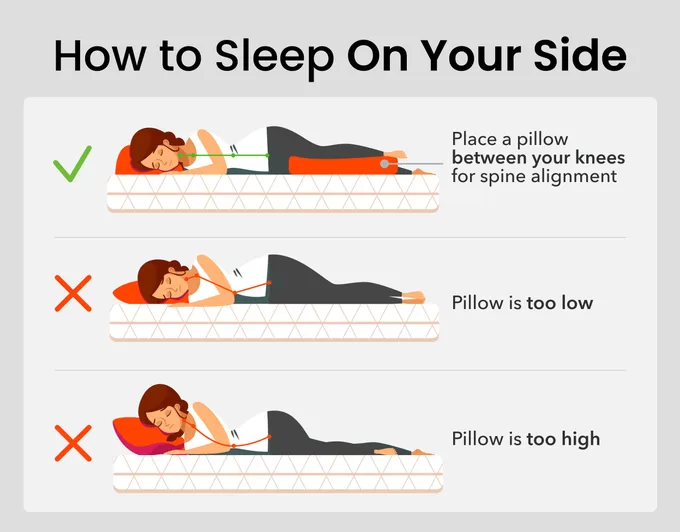Sleep Smarter: How to Sleep on Your Side for Proper Neck and Hip Alignment
If you wake up sore or stiff, your sleeping position could be doing more harm than good. Side sleeping, one of the most recommended positions for spinal health, can either relieve or worsen pain depending on how it’s done. This article breaks down the ideal side sleeping technique, especially for those recovering from injury or dealing with chronic pain.
1️⃣ Why Side Sleeping Can Be Good — or Bad — for Your Spine
The Pros of Side Sleeping
Sleeping on your side can:
- Improve airflow and reduce snoring
- Help digestion and ease heartburn
- Reduce pressure on the lower back
However, these benefits only apply if your spine is properly aligned.
When Side Sleeping Goes Wrong
Incorrect pillow height or posture can:
- Overstretch neck muscles
- Misalign your hips
- Pinch nerves in the shoulder or spine
2️⃣ The 3-Step Technique to Side Sleep Like a Pro
Pillow Position & Height
Your pillow should:
- Keep your neck in line with your spine (neither too high nor too low)
- Support the curve of your neck
- Be made from medium-density memory foam or latex for ideal contouring
👉 Avoid ultra-soft or overstuffed pillows. Test by lying down and seeing if your neck tilts up or down unnaturally.
Knee Pillow & Body Support
Placing a pillow between your knees:
- Maintains hip alignment
- Reduces twisting at the lower back
- Prevents morning hip or knee soreness
🛏️ Bonus tip: A full-length body pillow can stabilize both your arm and leg, adding extra comfort and symmetry.
3️⃣ Side-Switching & Pressure Relief for Injury Recovery
Rotate Sides to Avoid Imbalances
Sleeping on the same side can:
- Cause shoulder pressure buildup
- Lead to muscular imbalance
Alternate sides every few nights or invest in a mattress with pressure-relieving zones.
Post-Injury Modifications
If recovering from:
- Shoulder injuries → Hug a pillow to offload pressure
- Hip pain → Use a thicker knee pillow
- Neck strain → Add a rolled towel inside the pillow cover for extra cervical support
Consult a physical therapist for tailored adjustments.
✅ Conclusion: How to Get Started Today
Side sleeping can be a game-changer — or a pain trigger — depending on technique. Starting tonight:
- Adjust your pillow height to align your neck.
- Place a cushion between your knees.
- Use a body pillow for full-body symmetry.
- Alternate sides weekly to balance pressure.
- Consult a specialist if recovering from injury.
Small tweaks = big difference in sleep quality and pain reduction!
🔍 FAQ
Is it okay to sleep on one side only?
No. Alternating sides prevents long-term pressure buildup on the same shoulder or hip.
What’s the best pillow for side sleepers?
Medium-loft memory foam or contoured cervical pillows work best to keep your neck aligned.
Can sleeping on your side cause back pain?
Only if your hips or shoulders are misaligned. A pillow between the knees helps prevent this.






